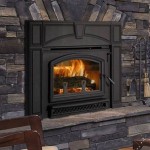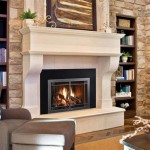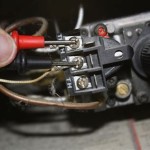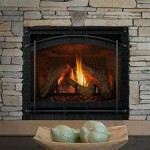How To Install Thin Stone Veneer Over Brick Fireplace
Transforming an existing brick fireplace with thin stone veneer can dramatically enhance the aesthetic appeal of a room. This project, while manageable for experienced DIYers, requires meticulous preparation, a solid understanding of masonry techniques, and adherence to safety guidelines. This article outlines the comprehensive process of installing thin stone veneer over a brick fireplace, covering everything from surface preparation to final sealing.
The allure of thin stone veneer lies in its ability to replicate the appearance of natural stone without the substantial weight and cost associated with full-thickness stone. Its relatively thin profile (typically 1 to 1.5 inches) minimizes the need for structural modifications, making it an ideal choice for fireplace renovations. Before embarking on this project, it is crucial to assess the existing brick fireplace to ensure it can adequately support the added weight of the veneer and mortar.
I. Preparation and Assessment
The foundation for a successful thin stone veneer installation is thorough preparation. This stage involves cleaning, inspecting, and potentially modifying the existing brick surface to ensure optimal adhesion. Neglecting this step can lead to veneer delamination and project failure.
Begin by visually inspecting the brick fireplace. Look for any signs of damage, such as cracks, loose bricks, or crumbling mortar. These issues must be addressed before proceeding. Loose bricks should be re-mortared or replaced entirely. Cracks, depending on their severity, may require patching with masonry repair mortar or, in extreme cases, structural reinforcement.
Next, thoroughly clean the brick surface. Remove any dirt, dust, soot, efflorescence (a white, powdery deposit), or existing coatings such as paint or varnish. A wire brush and a solution of trisodium phosphate (TSP) and water are effective for removing surface contaminants. Scrub the brick vigorously, paying particular attention to mortar joints, and then rinse thoroughly with clean water. Allow the brick to dry completely for at least 24 hours. Pressure washing can expedite the cleaning process but should be done cautiously, using a low-pressure setting to avoid damaging the brick or mortar.
Following cleaning, assess the brick's porosity. To test this, splash a small amount of water onto the brick surface. If the water is quickly absorbed, the brick is adequately porous and will provide a good bond for the mortar. If the water beads up on the surface, the brick is too smooth or sealed and requires further preparation. In such cases, acid etching or mechanical abrasion may be necessary to roughen the surface and improve adhesion. Consult with a masonry expert for guidance on the appropriate method.
Finally, consider the overall design and layout of the stone veneer. Dry-fitting the stones before installation allows for experimentation with different patterns and ensures a visually appealing final result. This process also helps to identify any stones that need to be cut or shaped to fit specific areas of the fireplace.
II. Applying Scratch Coat and Installing Metal Lath
Once the brick surface is clean, stable, and adequately porous, the next step is to apply a scratch coat of mortar and install metal lath. This crucial layer provides a textured surface for the stone veneer to adhere to and distributes the weight of the veneer evenly across the brick substrate.
A scratch coat is a thin layer of mortar (typically 1/4 to 3/8 inch thick) applied to the brick surface. It acts as a bonding agent between the brick and the metal lath. Use a Type S mortar mix, which is specifically formulated for veneer applications and offers superior compressive strength and bond adhesion. Mix the mortar according to the manufacturer's instructions, ensuring a consistent, workable consistency.
Apply the scratch coat evenly across the entire surface of the fireplace using a notched trowel. The notches create ridges in the mortar, providing a mechanical key for the metal lath. Ensure that the scratch coat completely covers the brick surface, filling in any voids or irregularities. Immediately after applying the scratch coat, use a stiff brush or a notched trowel to create horizontal grooves in the mortar. These grooves further enhance the bond between the scratch coat and the metal lath.
Metal lath is a galvanized steel mesh that provides reinforcement and a consistent surface for the thin stone veneer. It is attached to the brick surface over the scratch coat using masonry nails or screws. Overlap the edges of the metal lath sheets by at least 1 inch, and secure them to the brick every 6 to 8 inches. Be careful to avoid puncturing any gas lines or electrical wiring while securing the lath.
After attaching the metal lath, apply a second, thinner coat of mortar over the lath, fully embedding the metal mesh. This second coat creates a smooth, uniform surface for the stone veneer and further enhances the bond strength. Allow the scratch coat and mortar-embedded metal lath to cure for at least 24 to 48 hours before proceeding with the stone veneer installation. The curing process allows the mortar to fully hydrate and develop its maximum strength.
III. Installing the Thin Stone Veneer
With the scratch coat and metal lath properly installed and cured, the installation of the thin stone veneer can begin. This stage requires careful attention to detail, precise mortar application, and a keen eye for aesthetics.
Before applying any mortar, lay out the stones on the floor to finalize the design and pattern. This dry-fitting process allows for visual adjustments and ensures a balanced, aesthetically pleasing arrangement. Consider the size, shape, and color variations of the stones to create a natural and visually appealing look. Mark the location of each stone with a pencil or marker to facilitate the installation process.
Mix the mortar according to the manufacturer's instructions, using a Type S mortar specifically designed for thin stone veneer. Ensure the mortar is thoroughly mixed and has a workable, creamy consistency. Avoid adding excessive water, as this can weaken the mortar and compromise its bond strength.
Using a margin trowel, apply a generous layer of mortar to the back of each stone. The mortar should be thick enough to create a strong bond but not so thick that it squeezes out excessively when the stone is pressed into place. Apply enough mortar to completely cover the back of the stone, ensuring full contact with the mortar-embedded metal lath. For irregular stones, butter the edges with mortar to create a seamless transition between the stones.
Press the stone firmly into place, aligning it with the marks made during the dry-fitting process. Apply firm, even pressure to ensure good contact between the stone, mortar, and lath. Wiggle the stone slightly to help it settle into the mortar and create a stronger bond. Excess mortar will squeeze out from the sides of the stone. This is normal and should be removed immediately with a trowel. Use the trowel to smooth the mortar joints and create a clean, professional look.
Continue installing the stones, working from the bottom up. Use shims or spacers to maintain consistent joint spacing between the stones. This is particularly important for dry-stacked veneer, where a uniform joint width enhances the overall appearance. Check the alignment of the stones frequently using a level or straightedge to ensure a plumb and level installation. Make any necessary adjustments while the mortar is still wet.
Allow the mortar to cure for at least 24 to 48 hours before removing the shims or spacers. This allows the mortar to fully harden and support the weight of the stones. Once the mortar has cured, clean any remaining mortar residue from the surface of the stones using a soft brush and a mild detergent solution.
IV. Grouting and Sealing
After the stone veneer has been installed and the mortar has cured, the final steps are grouting and sealing. Grouting fills the joints between the stones, creating a finished, cohesive look. Sealing protects the stone and mortar from moisture damage and staining.
Choose a grout color that complements the stone veneer. Various grout colors are available, ranging from light to dark, to create different visual effects. Premixed grout is convenient and ensures consistent color throughout the project. Alternatively, you can mix your own grout using a dry grout mix and water. Follow the manufacturer's instructions for mixing and application.
Apply the grout using a grout bag or a grout float. A grout bag allows for precise application of the grout into the joints, while a grout float is used to spread the grout evenly across the surface. Fill the joints completely, packing the grout firmly into place. Remove any excess grout from the surface of the stones using a damp sponge. Be careful not to remove too much grout from the joints, as this can weaken the overall structure.
Tool the grout joints using a grout jointer or a rounded tool. Tooling compresses the grout and creates a smooth, consistent finish. Different tooling techniques can be used to create different joint profiles, such as concave, flush, or raked. Choose a joint profile that complements the style of the stone veneer.
Allow the grout to cure for at least 72 hours before applying a sealer. The curing process allows the grout to fully harden and develop its maximum strength. Clean any remaining grout haze from the surface of the stones using a grout haze remover. Follow the manufacturer's instructions for application and removal.
Apply a masonry sealer to the stone veneer and grout joints to protect them from moisture damage, staining, and efflorescence. Choose a sealer that is specifically designed for natural stone and is breathable, allowing moisture vapor to escape from the substrate. Apply the sealer according to the manufacturer's instructions, using a brush, roller, or sprayer. Multiple coats may be necessary to achieve adequate protection.
Regularly inspect the stone veneer for any signs of damage or deterioration. Repair any cracks or loose stones promptly to prevent further damage. Clean the stone veneer periodically using a mild detergent solution and a soft brush. Avoid using harsh chemicals or abrasive cleaners, as these can damage the stone and grout.

Thin Stone Veneers Make A Fireplace Update Easy Swenson Granite 100 Natural Stones

How To Install Thin Brick Veneers On Your Fireplace

Installing Stone Veneer Over A Brick Fireplace Grand River

Installing Stone Veneer Over A Brick Fireplace Grand River

Fireplace Facelift Using Natural Stone Veneer

How To Install Thin Brick Veneers On Your Fireplace

Can You Put Stone Veneer Over Brick

Transform Your Home Stone Veneer Over Brick Fireplace Guide

Can You Put Stone Veneer Over Brick

Building A Stone Veneer Fireplace Over The Brick
Related Posts








